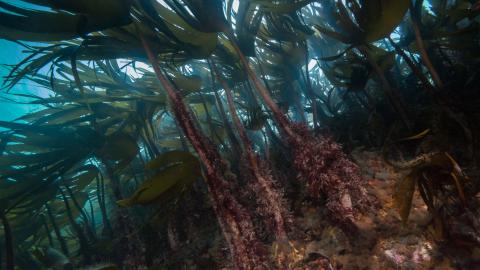FULL REVIEW PAPER
Image

What is already happening?
- North Sea infaunal species have shifted their distributions in response to changing sea temperature. Most species have been unable to keep pace with shifting temperature, meaning they are subjected to warmer conditions. These species are generally expanding their distribution northwards more quickly than they are retreating from the south.
- Climate and non-climate drivers (e.g. primary productivity) are likely to interact and alter species responses to climate change, including species interactions. These outcomes are likely to be dependent on species life-history traits (e.g. small-bodied, compared to large-bodied, animals).
- Changes in the abundance of a number of UK kelp species, linked to sea-temperature rise, is leading to alterations in the structure of kelp assemblages. This has implications for kelp-forest community structure and habitat resilience.
CONFIDENCE LEVEL
LOW
Medium evidence, low agreement
While there has been a substantial increase in the number of studies investigating the impacts of climate change in the UK’s shallow and shelf seas, this is for a limited number of species and over a limited spatial scale.
What could happen in the future?
- Modelling suggests that there will be significant shifts in range, distribution and abundance of kelp and cold-water corals across the UK, and benthic infauna and epifauna within the North Sea, leading to altered community structures.
- Ocean acidification may cause corrosion of cold-water corals and maerl beds, particularly the non-living structures, which provide structural support for the living surface-layer.
CONFIDENCE LEVEL
LOW
Medium evidence, low agreement
Models are becoming increasingly sophisticated and estimate current species distributions with some confidence, but again these are limited to a small number of taxa. In addition, such models do not account for interacting stressors or changes in biotic interactions due to climate change.
Key Challenges and Emerging Issues
- Establishing baseline data for species and habitats to separate effects from different stressors.
- Improving monitoring to better characterise year-to-year population variability.
- Improving predictions of extreme events, and the disproportionate effects they have on species range, abundance, and local extinctions, to support cross-cutting decision making.
- Identifying potential impacts from changes in 'engineering' taxa on ecosystems, and the goods and services they provide.
- Taking difficult cross sectoral decisions to manage seas and increase resilience to multiple stressors.